Camino del Norte – Asturias
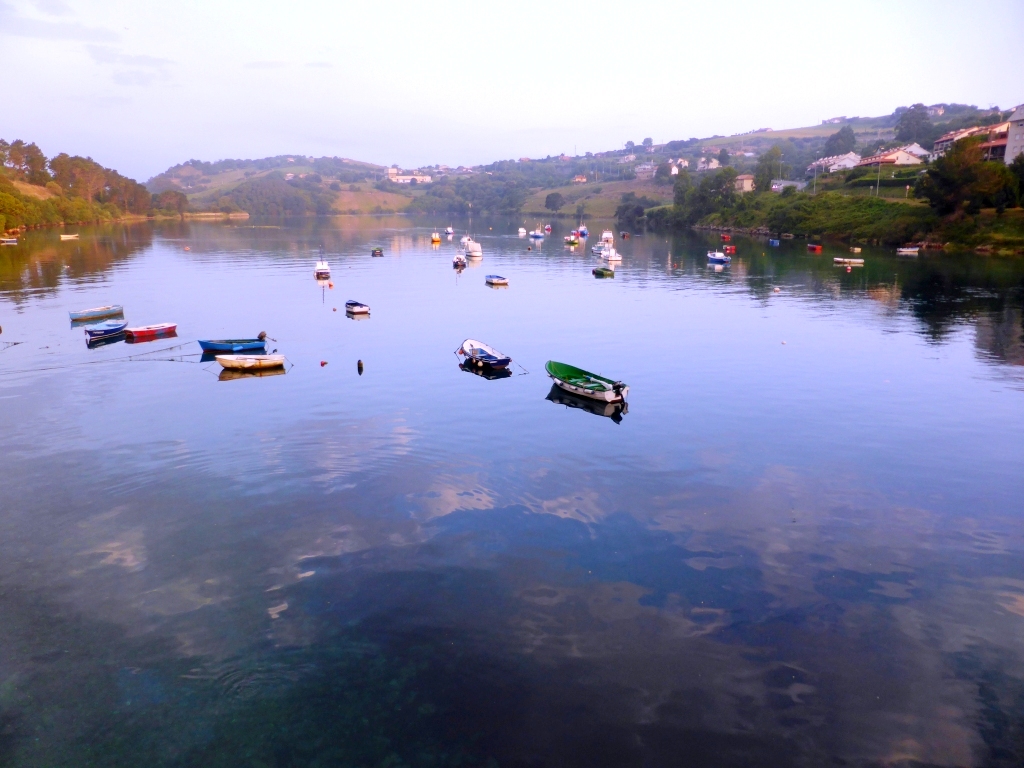
San Vincente de la Barquera last stop before Astirias.
I walked this stretch of the Camino in July which was fine for weather but very, very busy. I wonder what it was about me in July last year that has left me with few memories of the two weeks I spent in Asturias. It was hard going, that I do remember. Every footstep was a struggle. Life, we often hear, is a pilgrimage and Asturias was for me the doldrums, like walking through a giant bowl of porridge.
Playas y playas.
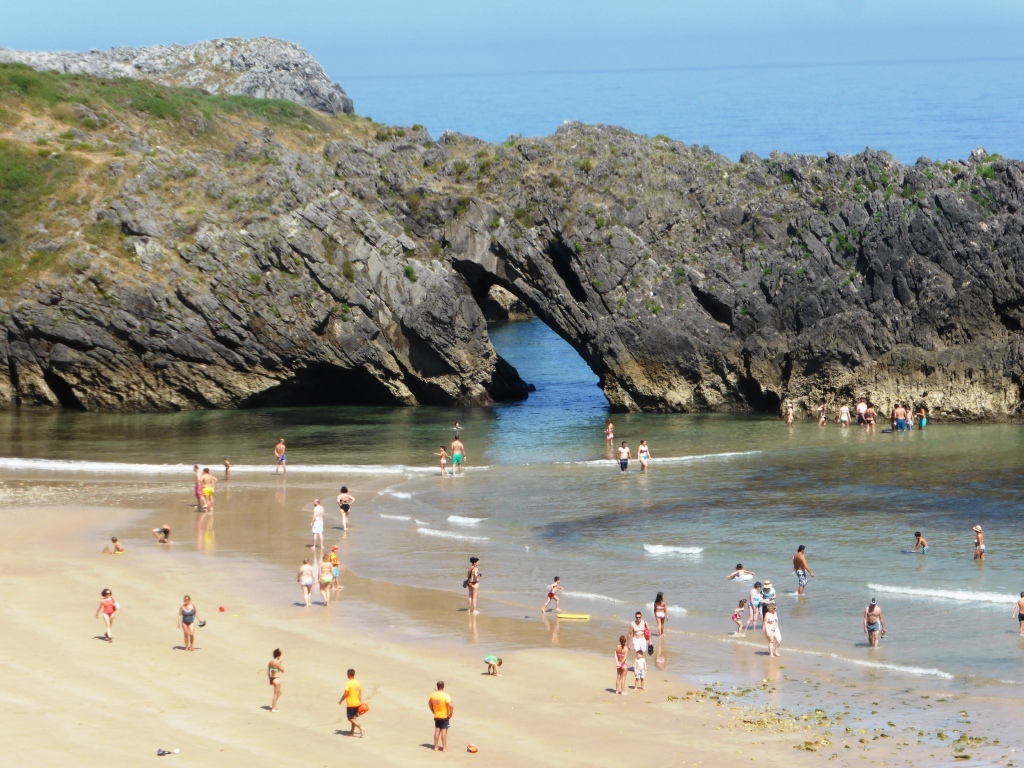
So many beaches : this might be Llanes.
I now can’t recall which beaches were which. What is certain is that they are all clean. A mixture of ferocious storms and cool water ensure that the North of Spain is fresh all summer and spared the excesses of the Mediterranean tourist saturation.
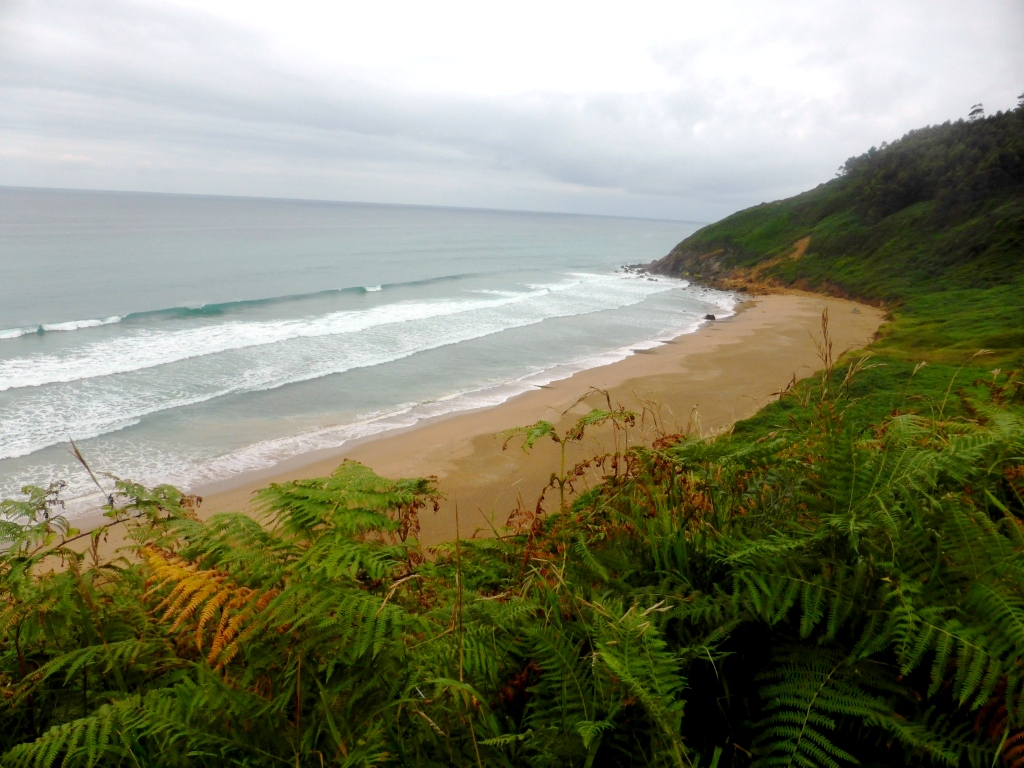
A wet day and an empty beach.
None of the beaches are huge like on the Portuguese Atlantic coast. They each have their own personality bravely formed over millenia of chipping away at the landmass while the sea’s horizon looks vigilantly on in a blank monotony.

Playa Ballota
The beaches are charming and inviting yet only part of this Camino.
Big Industry.
For all its mountains and greenery Asturias has been one of the most contaminating regions of Spain.
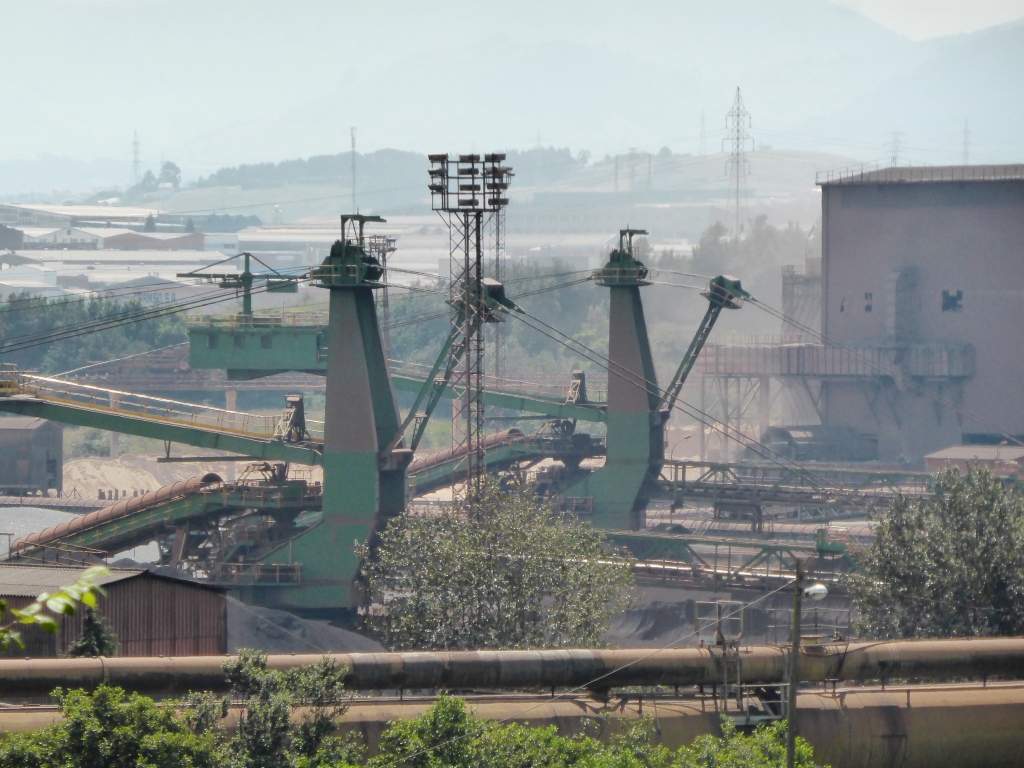
Between Oviedo and Aviles
Heavy engineering and chemical plants fueled by coal from local mines placed Asturias alongside Vizcaya and Barcelona as the source of almost all the Peninsular’s pollution.

Steel works near Aviles.
For 20 km between Gijon and Aviles, the Camino passes between huge industrial landscapes which seem to belong to past centuries or, in my case, my childhood.
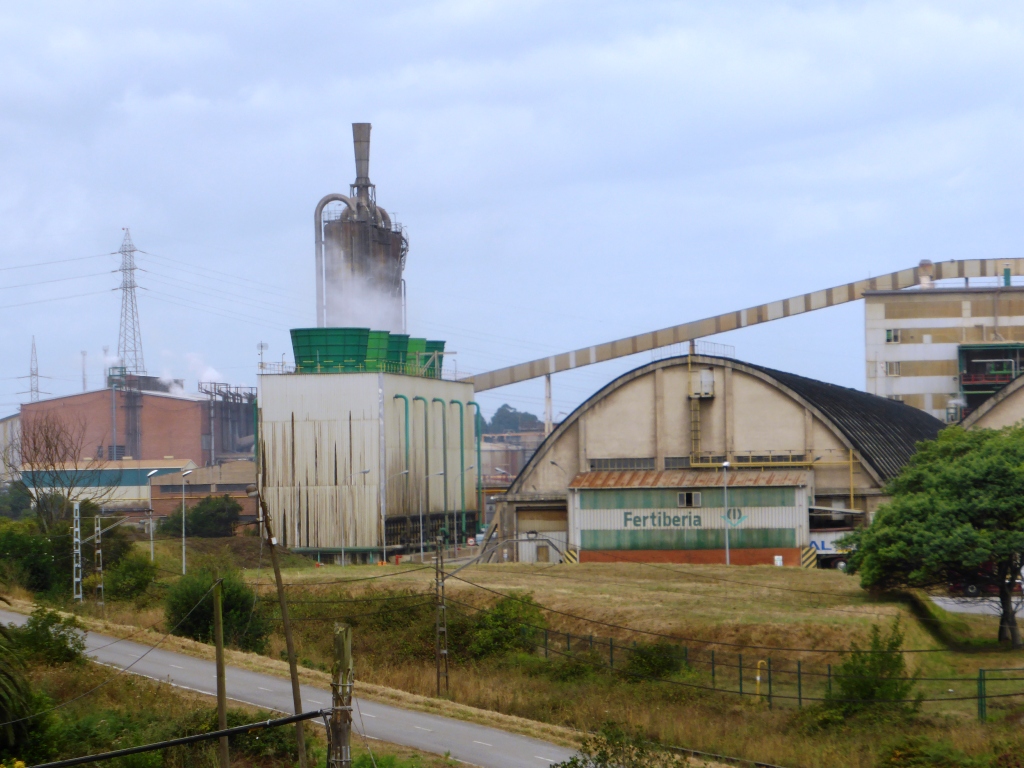
Fertiliser factory
I rather enjoyed this part of the Camino. It is a break from the mystical ecstacy of raw nature.
The sheer bigness of it all is preposterously sublime.
Asturias is green.
-
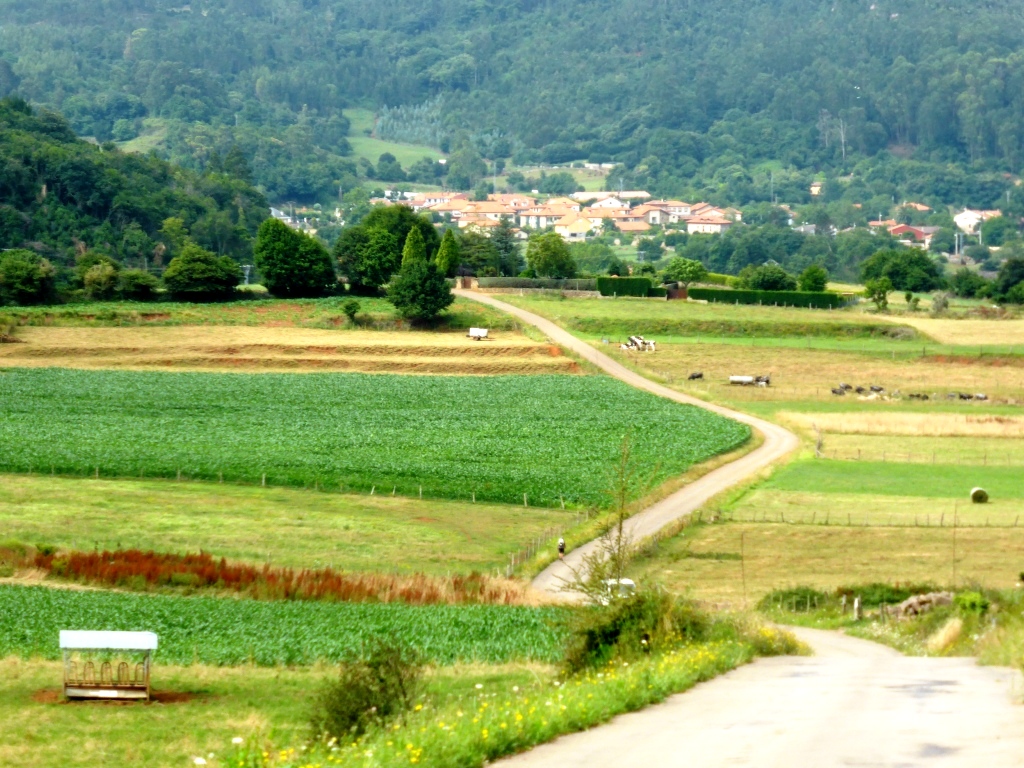
All year round Asturias is green.
Asturian green is different from Basque, Cantabrian or Galician green. Cantabrian green is flatter and lighter. Basque green is dark and solid: it is night time green. Galicia green smells strongly of cow manure and granite. Asturian green caresses our eyes in verdant kisses and enters the pores of every object we look at.
-

Green boat
Inside the forests, trees and plants and bushes compete; chanting green in contrapuntal harmony. The rain falls in green droplets.
-

Everywhere, Asturian green.
So that’s what I can recall of Asturias: beaches, huge factories and green.
